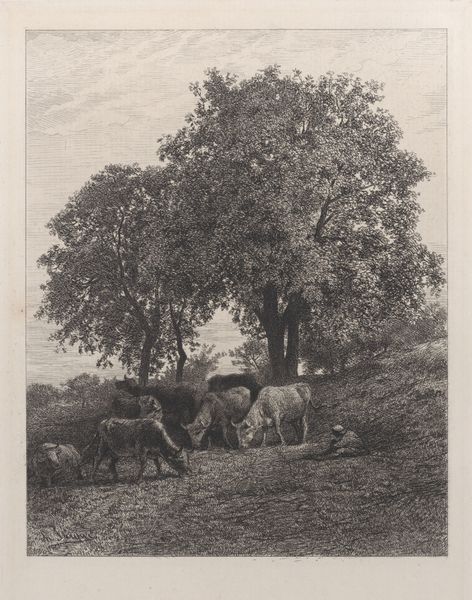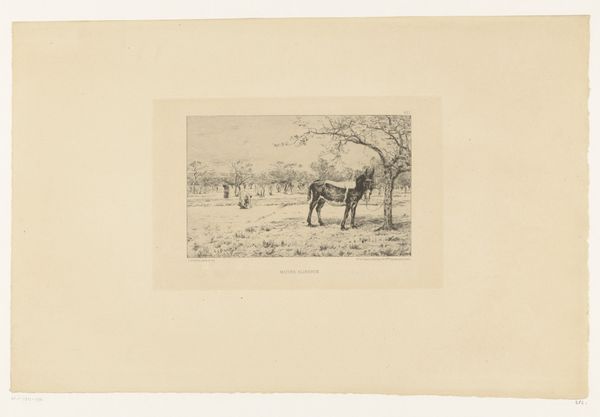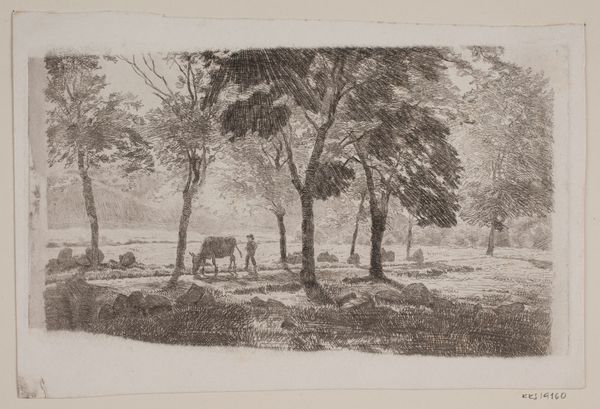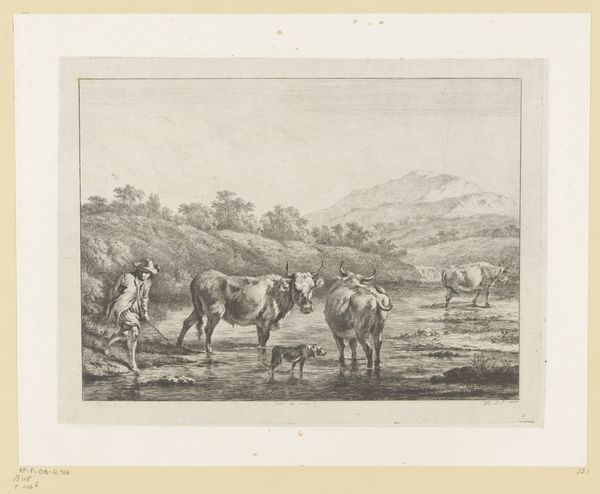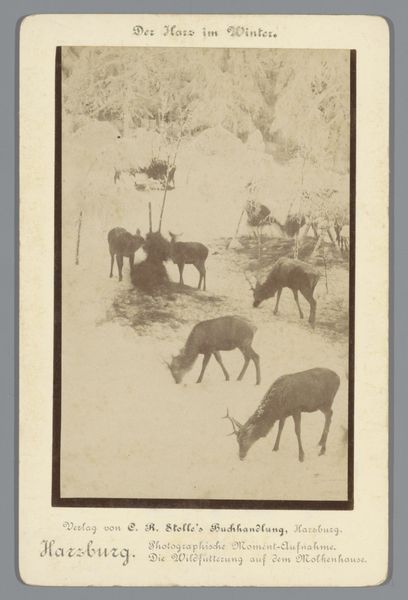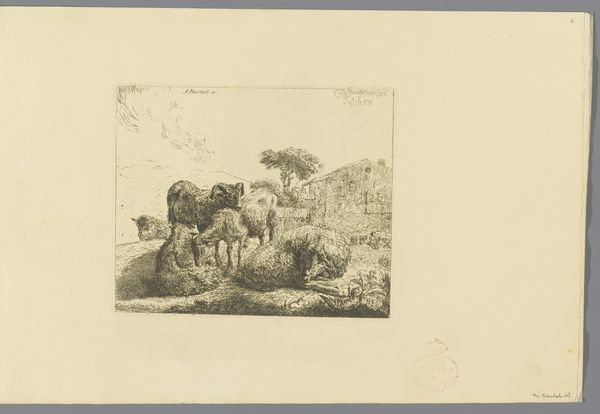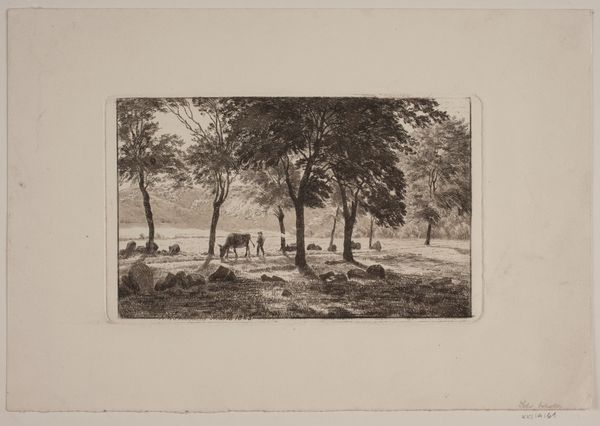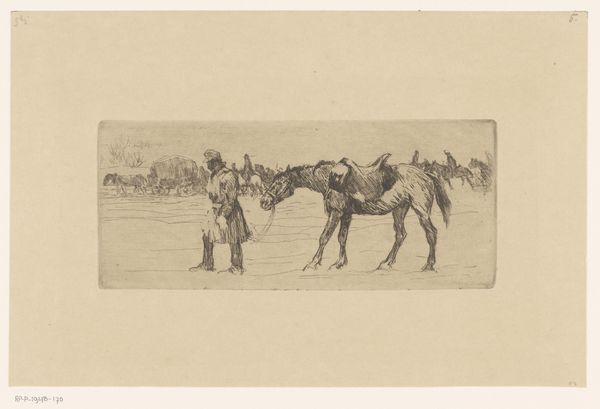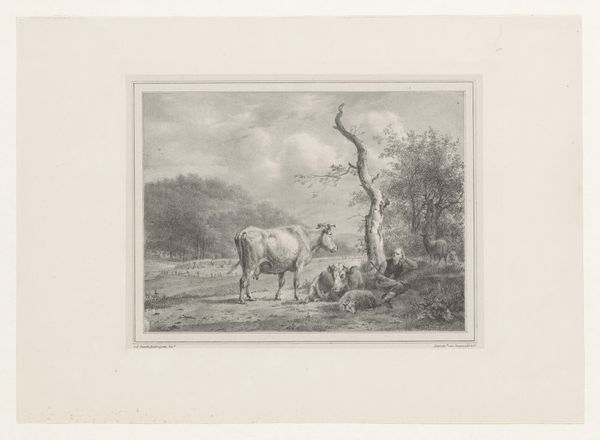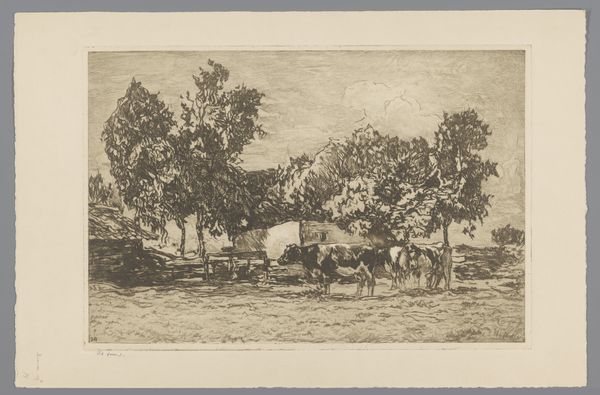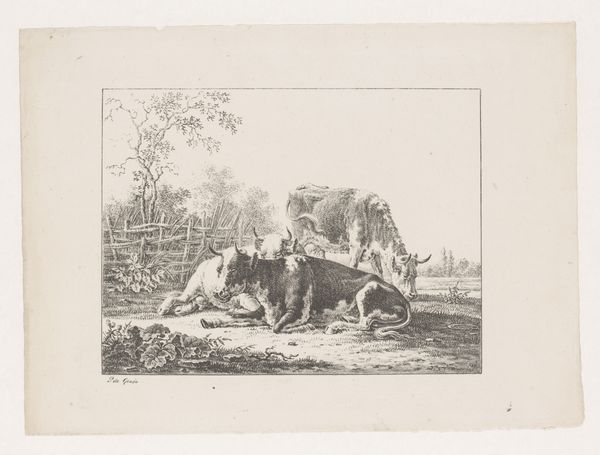
Mannen, kinderen en lastdieren voor een Doumpalm in Egypte c. 1870 - 1890
0:00
0:00
photography, albumen-print
#
portrait
#
aged paper
#
toned paper
#
light pencil work
#
landscape
#
photography
#
orientalism
#
genre-painting
#
albumen-print
Dimensions: height 218 mm, width 274 mm
Copyright: Rijks Museum: Open Domain
Curator: This albumen print, attributed to C. & G. Zangaki, circa 1870-1890, is titled "Mannen, kinderen en lastdieren voor een Doumpalm in Egypte." It’s currently held here at the Rijksmuseum. Editor: Immediately, I'm struck by the tonality. It’s almost sepia, evoking a bygone era and lending a certain gravitas to the mundane scene it depicts. Curator: Precisely. The tonal range achieved through the albumen process creates a sense of depth and almost textural richness. Notice how the light falls on the Doum palm, the clear focal point around which the scene revolves, and the play of shadow. The geometry created by the tree is masterful. Editor: I'm more interested in what albumen printing meant materially and socially. It wasn’t a simple process. Think of the egg whites required, the labor of sensitizing and coating the paper, the environmental impact of producing those chemicals. This wasn't just art; it was a production, embedding the socio-economic realities of the time. Curator: But doesn’t the composition guide our interpretation? The placement of the figures, the way they interact with the animals – all carefully arranged to construct a narrative. The relationships between the figures are well framed and ordered by the artists' decisions, producing this genre painting of sorts. Editor: Arranged, yes, but to what end? These photographs, circulated widely as postcards, fed into a visual economy of Orientalism, objectifying and exoticizing the "East" for European consumption. The "genre painting" as you say is not innocent—the subjects and their activities were carefully selected. Curator: I concede the photograph operates within the context of Orientalism; still, focusing on the intrinsic elements, the light, the composition, provides keys to understand it better as a study in form. The texture is almost tangible. Editor: And for me, considering that texture brings me back to thinking about those eggs, the chemistry, the exploited labor—it forces us to look at this object as something more than just a pretty picture or art piece from the past, it highlights production and reception, and encourages discussion about its place within unequal structures. Curator: A point well-articulated! This interplay between form and the processes creating the print enhances the experience with a greater scope. Editor: Indeed! Bringing a fuller awareness of production techniques to a more human dimension, one hopes.
Comments
No comments
Be the first to comment and join the conversation on the ultimate creative platform.
